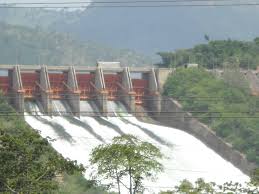The Volta River Authority (VRA) has issued a firm warning to Municipal and District Assemblies, as well as traditional authorities, to strictly halt all forms of farming and construction within the 280-foot contour zone of Volta Lake. The directive is part of measures aimed at protecting the environment, ensuring public safety, and safeguarding the country’s power generation infrastructure.
The caution was delivered during a recent stakeholder engagement workshop on emergency preparedness and environmental sustainability held in Asesewa, located in the Upper Manya Krobo District of Ghana’s Eastern Region.
Mr. Jonathan Hagan, Manager for Sustainability at the VRA, explained that the 280ft contour is not just a random demarcation. It represents the maximum water level recorded on the Volta Lake following the construction of the Akosombo Dam. The area is therefore flood-prone and environmentally sensitive.
He said, “During the rainy season, water levels rise significantly and flood parts of the land within the 280ft mark. Any form of development—whether farming or infrastructure—within this zone threatens power generation, ecosystems, and local livelihoods.”
Mr. Hagan revealed that in many cases, communities misinterpret the riparian zone during the dry season as vacant or unused land, and they encroach by cultivating or building. However, he stressed, “That land is not vacant; it is a waterway. When the lake reaches its high-water mark or when it spills over, all properties and crops within that zone will be submerged.”
To reduce further encroachment, the VRA has installed demarcation pillars to mark the 280ft boundary line across several communities including Akateng, Fantem, Abotoase, Botokope, and Dzemeni.
Additionally, the VRA is piloting bamboo planting projects in Salaga, Yeji, Kwame Danso, and the Afram Plains. Mr. Hagan noted that bamboo is fast-growing and helps to stabilize soil, acting as a natural barrier to protect the lake’s boundary from erosion and illegal development.
On the legal side, Mr. Francis Abban, VRA’s Communications Manager, cited Section 27(2)(g) of the Volta River Development Act, 1961 (Act 46), and the State Lands (Volta River Flooded Areas) Instrument, 1974 (E.I. 98). These laws designate about 2,600 square miles of land as submerged areas, making any form of human activity in these zones legally prohibited.
He further mentioned the relevance of Ghana’s Buffer Zone Policy, which promotes preservation of vegetation along water bodies to enhance water quality and ecological balance. “The recommended buffer width beyond the 280ft mark is between 10 and 60 meters,” he said.
Reacting to the VRA’s concerns, Mr. Kwesi Lawer, the District Chief Executive (DCE) for Upper Manya Krobo, acknowledged that poor land-use planning and unregulated activities upstream, such as farming along riverbanks, were contributing to environmental degradation and flooding.
He said, “We will ensure that lands within the contour are left fallow, and where there are no trees, afforestation will be pursued to prevent erosion and protect the dam.” He also pledged that with support from the VRA, Forestry Commission, and the Department of Agriculture, the Assembly would create a community-led task force to monitor illegal activities and support reforestation efforts.
The DCE strongly condemned previous planning failures, citing the submergence of the Akateng market, which had been wrongly built within the 280ft contour.
“During my tenure, no development will be allowed on the 280ft contour line. What happened at Akateng must never happen again,” he declared.
The VRA’s renewed warning comes at a time when climate change, increasing rainfall, and human activities are putting intense pressure on Ghana’s water bodies. The Akosombo Dam remains a critical national asset, supplying hydroelectric power to millions. Protecting its watershed and the Volta Lake ecosystem is therefore vital for both energy security and environmental sustainability.
By calling for strict enforcement of land-use regulations and community involvement in environmental protection, the VRA aims to strike a balance between development and conservation—ensuring that human activity does not compromise the country’s future.
